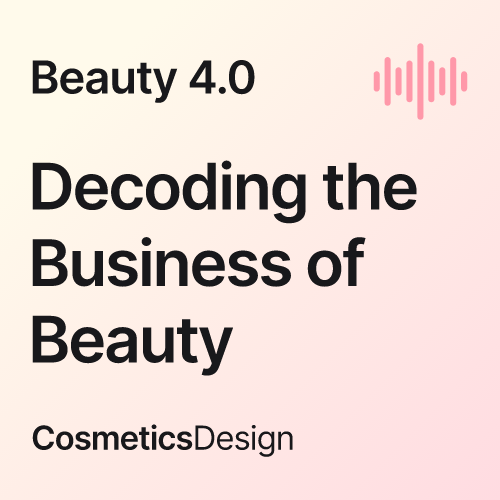China’s e-commerce boom part III: How can individual brands stand out?

“New retail”
Jack Ma, the founder of China’s retail giant The Alibaba Group, has dubbed the combination of the best of both the online and physical retail spheres as “new retail”, Matthew Crabbe explained.
Through adopting intuitive strategies that focus on both the online and offline retail elements, online retailers can maintain their competitive edge.
“The distinction between online and offline retail is now redundant as retail now has to encompass both: giving consumers the convenience of online retail and the experience of in-store shopping,” stressed Matthew Crabbe, Director of Research, Asia-Pacific at Mintel.
As the “best competitive innovations in China’s total retail market are now in the realm of this online-to-offline integration”, brands are now pairing technology with personalisation to gain market share.
For example, cosmetics names are enabling their customers to browse online for products and try them in-store, or use mobile apps to navigate through their shops to find the product they want to try.
Brands are also conscious of offering consumers detailed product information and price comparisons with other competing products to provide high quality, clear information relating to product efficacy.
Blurring the distinction
With Chinese companies opting for a dual online-offline marketing approach to appeal to a wider demographic of beauty buyers, the key is to garner trust with consumers.
Trust is achieved by “offering detailed product information from the retailer’s end, and recommendations through social media from the consumer’s end”, Crabbe added.
Honesty and transparency are the first proactive step businesses can take to help build trust through engagement.
Having “a conversation about their needs, and offering the products best suited to those needs, while providing strong assurance of product quality and provenance”, is the best way to build that trust, Crabbe assured.
“Digital channels are also about enhancing the convenience”, Crabbe noted, “which is why WeChat has done so well – integrating, not only online shopping, but also messaging, digital media, all in one social media platform”.
While physical and online retail is merging so too is the gap between the “wider consumer services market to create a suite of complimentary daily consumer needs fulfilment platforms”.
South Korean influence
Mintel’s research found that 45% of Chinese cosmetics consumers buy beauty and personal care products from South Korea. While this relates to the wider beauty and personal care industry, there is one key demographic leading the way when it comes to purchases from the beauty giant.
The most significant consumer group among buyers of imported beauty and personal care products were particularly women aged 20 to 24.
Of these young female consumers in China, 62% bought beauty and personal care from South Korea, 48% from Japan and 23% from Taiwan.
Crabbe highlighted how these statistics “reinforce how influential pop cultures” are among young people in China.
Indeed, according to Mintel’s Facial Skin Care in China 2016 report, South Korean beauty brands are the most frequently purchased among Chinese consumers, followed by those from China, Japan and France.
“K-beauty’s popularity can be attributed to staunch supporters of cosmetics endorsed by South Korean celebrities; particularly younger female consumers aged 20 to 24 again,” Crabbe advised.





![Indus Valley is working to corner 30% of India's online premium boxed hair colour market. [Indus Valley]](/var/wrbm_gb_food_pharma/storage/images/_aliases/wrbm_tiny/publications/cosmetics/cosmeticsdesign-asia.com/article/2024/07/26/indus-valley-aims-to-secure-30-of-india-s-online-premium-hair-colour-market-with-organic-offerings/17594932-5-eng-GB/Indus-Valley-aims-to-secure-30-of-India-s-online-premium-hair-colour-market-with-organic-offerings.jpg)
![[Getty Images]](/var/wrbm_gb_food_pharma/storage/images/_aliases/wrbm_tiny/publications/cosmetics/cosmeticsdesign-asia.com/china/china-focus-latest-developments-in-china-s-booming-beauty-market25/17606695-1-eng-GB/China-focus-Latest-developments-in-China-s-booming-beauty-market.jpg)
![Kosé has launched makeup brand Visée in Singapore as part of plans to reinforce its position in SEA. [Visée]](/var/wrbm_gb_food_pharma/storage/images/_aliases/wrbm_tiny/publications/cosmetics/cosmeticsdesign-asia.com/headlines/business-financial/visee-singapore-kose-aims-to-enhance-brand-visibility-in-sea-with-new-launch/17587264-1-eng-GB/Visee-Singapore-Kose-aims-to-enhance-brand-visibility-in-SEA-with-new-launch.jpg)
![ble C&C is set on reinforcing its competitiveness in China’s beauty market. [Missha]](/var/wrbm_gb_food_pharma/storage/images/_aliases/wrbm_tiny/publications/cosmetics/cosmeticsdesign-asia.com/headlines/business-financial/able-c-c-aims-to-strengthen-competitiveness-in-china-through-online-expansion-kol-collabs/17591626-1-eng-GB/Able-C-C-aims-to-strengthen-competitiveness-in-China-through-online-expansion-KOL-collabs.jpg)

![LG H&H genetic study says 23 genetic regions affect natural skin tone. [Getty Images]](/var/wrbm_gb_food_pharma/storage/images/_aliases/wrbm_tiny/publications/cosmetics/cosmeticsdesign-asia.com/article/2024/07/23/lg-h-h-discovery-of-genetic-skin-tone-factors-in-east-asians-potentially-key-to-skin-radiance-developments/17587210-1-eng-GB/LG-H-H-discovery-of-genetic-skin-tone-factors-in-East-Asians-potentially-key-to-skin-radiance-developments.jpg)

![DR.CI:LABO expects brand-supplier partnerships gain more public prominence as consumers interest in skin care grows online. [Dr.Ci:Labo]](/var/wrbm_gb_food_pharma/storage/images/_aliases/wrbm_tiny/publications/cosmetics/cosmeticsdesign-asia.com/article/2024/07/22/brand-supplier-partnerships-will-come-to-the-fore-amid-the-online-skin-care-landscape-dr.ci-labo/17576755-1-eng-GB/Brand-supplier-partnerships-will-come-to-the-fore-amid-the-online-skin-care-landscape-DR.CI-LABO.png)